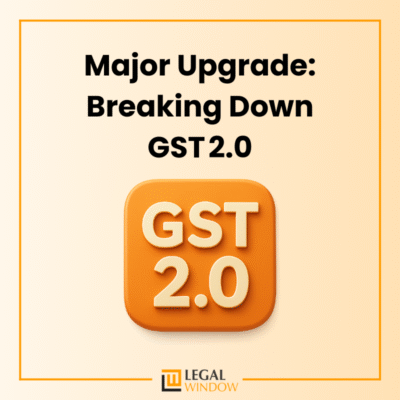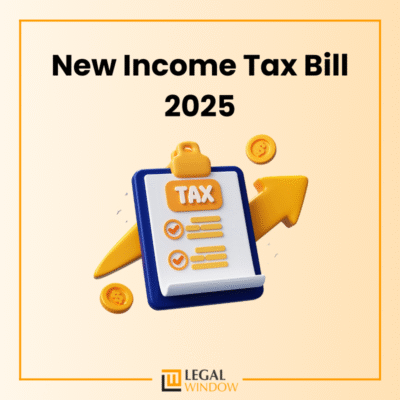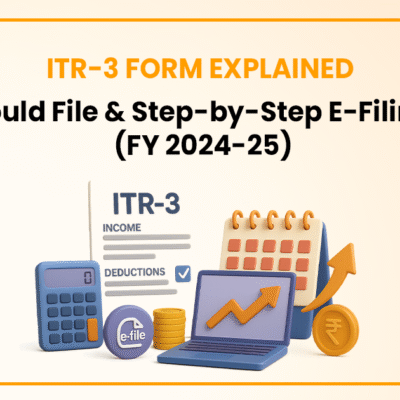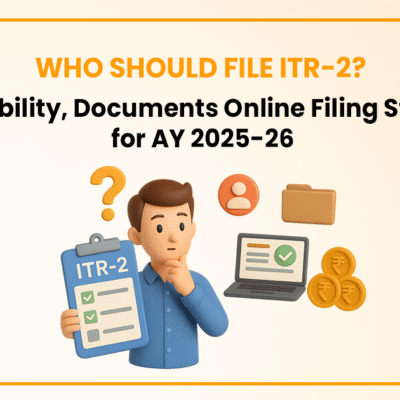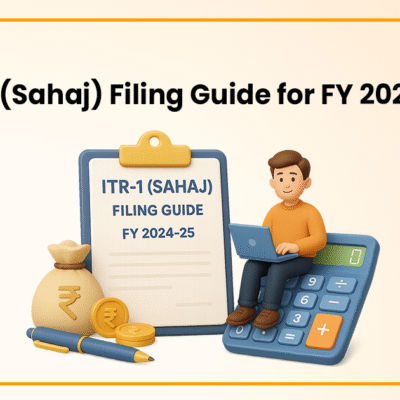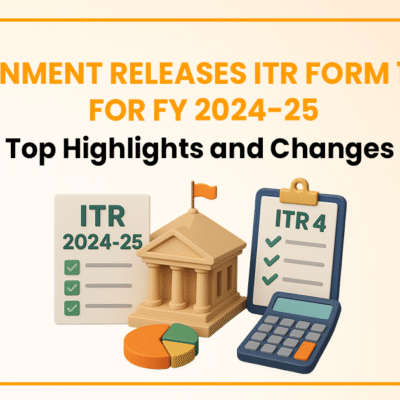Income tax return is a crucial statement of income of the concerned assessee, both for government and the individual or person filing it as it provides bases for many in depth conclusions like per capita income, sector wise growth etc. As India has a number a small scale industries or organisation contributing towards it GDP growth. Hence, it is more important to know about the various forms presently being used for ITR filings for different organisation. In this article, we shall be discussing about one of the form which is meant for small scale organisations i.e. ITR Form 5.
Page Contents:
What is ITR 5 Form?
This is an income tax return form that should be filed by specific parties. This form should be submitted by all firms, Association of Persons, LLPs, co-operative societies, Body of Individuals, Artificial Juridical Persons.
Who is eligible to file ITR 5 Form?
ITR Form 5 is basically meant for the following:
- Limited Liability Partnerships ( LLPs)
- Association of persons ( AOPs)
- Body of Individuals (BOI)
- Estate of deceased
- Estate of insolvent
- Business trust
- Investment fund
- Firm
- Cooperative Society
- Local Authority

Structure of ITR Form 5
The form consists of 2 parts and various schedules having significance of its own.
a) Part 1
Part 1 of the deals out with the following information

- General Information: This section asks for the details about the name, address, PAN no, date of incorporation of the assessee. Additional to this it also details about the section under which the return is being filed, whether the organization is recognized as start up by DPIIT, or is an FII or FPI. It also posses the information regarding decision making committee, shareholder, key persons in the organization and status under section 44AB or Tax Audit other than this other relevant details are also demanded by the ITR Form.
- Balance Sheet: Balance Sheet of the relevant financial year provides an outlook about entities assets and liabilities.
- Manufacturing Account, Trading Account and Profit and loss Statement: These statements or accounts gives information about the earnings and expenses of the entity giving a conclusion regarding the profit and loss earned by the person during the relevant financial year.
- Quantative Details: This section provides about the opening and closing balances of raw material, work in progress and finished goods.
- Other Information: Hereby the method of accounting, valuation of inventory and estimates adapted by the person are disclosed. Also the various disallowances under different sections of the Income tax are disclosed here.
Schedules in IR5-Form
There are 30 schedules presently which are described below.
| Schedule | Description |
| Schedule-HP | Income under house property |
| Schedule-BP | Income under profit and gain under business or profession |
| Schedule-DPM | Depreciation of assets under income tax |
| Schedule DOA | Depreciation of assets other than income tax |
| Schedule DEP | Depreciation of all the assets mentioned above |
| Schedule DCG | Deemed capital gain on sale of depreciable assets |
| Schedule ESR | Deduction under section 35 |
| Schedule-CG | Income under capital gain |
| Schedule-OS | Income under other source |
| Schedule-CYLA | Income after set off of current year losses |
| Schedule-BFLA | Income after set off of unabsorbed losses brought forward from earlier years |
| Schedule- CFL | Statement of carry forward losses |
| Schedule –UD | Statement of unabsorbed depreciation |
| Schedule ICDS | Income computation disclosures on profit |
| Schedule- 10AA | Computation of deduction u/s 10AA |
| Schedule- 80G | Deduction relating to the donations |
| Schedule- 80GGA | Details of donation for scientific research or rural development |
| Schedule- RA | Details of donations to research associations |
| Schedule- 80IA | Computation of deduction under section 80IA |
| Schedule- 80IB | Computation of deduction under section 80IB |
| Schedule- 80IC/ 80-IE | Computation of deduction under section 80IC/ 80-IE |
| Schedule 80P | Deductions under section 80P |
| Schedule-VIA | Statement of deductions (from total income) under Chapter VIA |
| Schedule –AMT | Alternate Minimum Tax payable under section 115JC |
| Schedule AMTC | tax credit under section 115JD |
| Schedule-SI | income which is chargeable to tax at special rates |
| Schedule IF | Partnership firm information |
| Schedule-EI | Exempt incomes |
| Schedule PTI | Pass Through Income details from business trust or investment fund |
| Schedule TPSA | Secondary adjustment to transfer price |
| Schedule FSI | Income from outside India and tax relief |
| Schedule TR | tax relief claimed for taxes paid outside India |
| Schedule FA | Foreign Assets and Income from any source outside India |
| Schedule GST | turnover/gross receipt reported under GST |
b) Part 2
It has two components:
Part 2-TI: Computation of the total income;
Part 2-TTI: Computation of the tax that should be paid on the total income.

c) Tax Payment
Here the details of advance tax and self assessment tax are provided. Other than this the details regarding tax deducted on source (TDS) and tax collected at source (TCS) are also provided.
d) Verification
After filing all the information above one needs to submit his return and verify the same. The verification of the ITR could be done in 2 ways
- By furnishing the return electronically via DSC (digital signature certificate)
- By furnishing the return data electronically and sending the ITR V at CPC Bangalore later on via post within 120 days of the filing the return. Also no annexure is required with ITR V while sending it to income tax department.
How to file ITR Form 5?
ITR Form 5 can be filed online on income tax portal through the prescribed form in xml format and verifying the same by the methods formerly mentioned. The form should be filed properly with the required details to avoid further non compliances and notices or orders from the Income Tax Department.
Takeaway
Thus, getting an insight about the ITR Form 5 could be very useful for the organization and its stakeholders as it guides them about studying their entities performance deeply and analytically. It also helps the mangers in drawing out the conclusion on various aspects like the tax planning methods, proper accounting, disclosure to be made to the government, better transparency of facts and figures and disallowances and allowances or deductions under Income Tax Act. Thereto, it is very important to understand each and every aspect or section/ part of the relevant form applicable on the assessee for the relevant financial year.
In case you have a query pertaining to filing this return form, then contact the team of professionals at Legal Window.
Company Secretary and diligent learner deeply immersed in the world of corporate law, compliance, and governance with a focus on developing a robust foundation in legal principles and corporate practices. Passionate about exploring the intricacies of company law, regulatory compliance, and corporate governance.
Categories
- Agreement Drafting (23)
- Annual Compliance (13)
- Change in Business (37)
- Company Law (150)
- Compliance (90)
- Digital Banking (3)
- Drug License (4)
- FEMA (17)
- Finance Company (42)
- Foreign Taxation (9)
- FSSAI License/Registration (15)
- GST (124)
- Hallmark Registration (1)
- Income Tax (214)
- Latest News (36)
- Miscellaneous (170)
- NBFC Registration (8)
- NGO (18)
- SEBI Registration (6)
- Section 8 Company (10)
- Start and manage a business (27)
- Startup/ Registration (134)
- Trademark Registration/IPR (48)
Recent Posts
- Major Upgrade: Breaking Down GST 2.0 September 15, 2025
- New Income Tax Bill 2025 August 27, 2025
- ITR-3 Form Explained: Who Should File & Step-by-Step E-Filing Guide (FY 2024-25) June 25, 2025
All Website Tags
About us
LegalWindow.in is a professional technology driven platform of multidisciplined experts like CA/CS/Lawyers spanning with an aim to provide concrete solution to individuals, start-ups and other business organisation by maximising their growth at an affordable cost.

